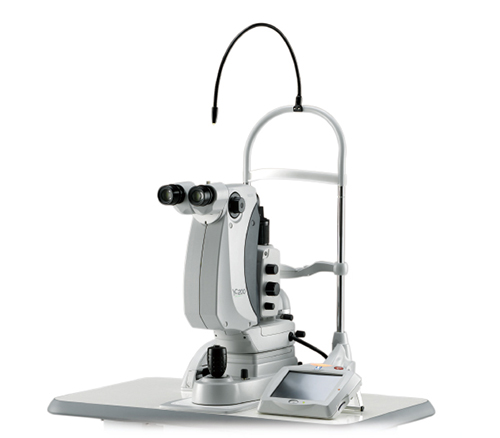Selective Laser Trabeculoplasty

Selective laser trabeculoplasty (SLT) is a laser surgical procedure used to help lower intraocular pressure (IOP) of patients with open-angle glaucoma. SLT is used to treat the eye’s drainage system, known as the trabecular meshwork—the mesh-like drainage canals that surround the iris. Treating this area of the eye’s natural drainage system improves the flow of fluid out of the eye, helping to lower the pressure.
The laser used in SLT works at very low levels. It treats specific cells selectively, leaving untreated portions of the trabecular meshwork intact. For this reason, SLT, unlike other types of laser surgery, may be safely repeated many times.
SLT is typically performed in the ophthalmologist’s office or an outpatient surgery center. The procedure usually takes about five to ten minutes. First, anesthetic drops are placed in your eye. The laser machine looks similar to the examination microscope that your ophthalmologist uses to look at your eyes at each office visit.
You will experience a flash of light with each laser application. Most people are comfortable and do not experience any significant pain during the surgery, although some may feel a little pressure in the eye during the procedure.
Most people will need to have their pressure checked after the laser treatment, since there is a risk of increasing IOP after the procedure. If this does occur, you may require medications to lower the pressure, which will be administered in the office. Rarely, the pressure in the eye increases to a high level and does not come down. If this happens, you may require a surgery in the operating room to lower the pressure.
Most people notice some blurring of their vision after the laser treatment. This typically clears within a few hours. The chance of your vision becoming permanently affected from this laser procedure is very small.
Most patients can resume normal daily activities the day after laser surgery. You may need to use eyedrops after the procedure to help the eye heal properly.
Risks associated with SLT include:
- increased pressure in the eye, possibly requiring medication or surgery;
- inflammation in the eye;
- bleeding;
- damage to the cornea, iris, or retina from the laser light;
- failure to adequately lower the eye pressure; and
- need for repeat laser surgery.
It will take several weeks to determine how much SLT will lower your eye pressure. You may require additional laser or glaucoma drainage surgery to lower the pressure if it is not sufficiently lower after the first laser treatment.
Most patients must continue to take medication in order to control and maintain their IOP; however, surgery can lessen the amount of medication needed.
While some people may experience side effects from medications or surgery, the risks associated with these side effects should be balanced against the greater risk of leaving glaucoma untreated and losing your vision.
